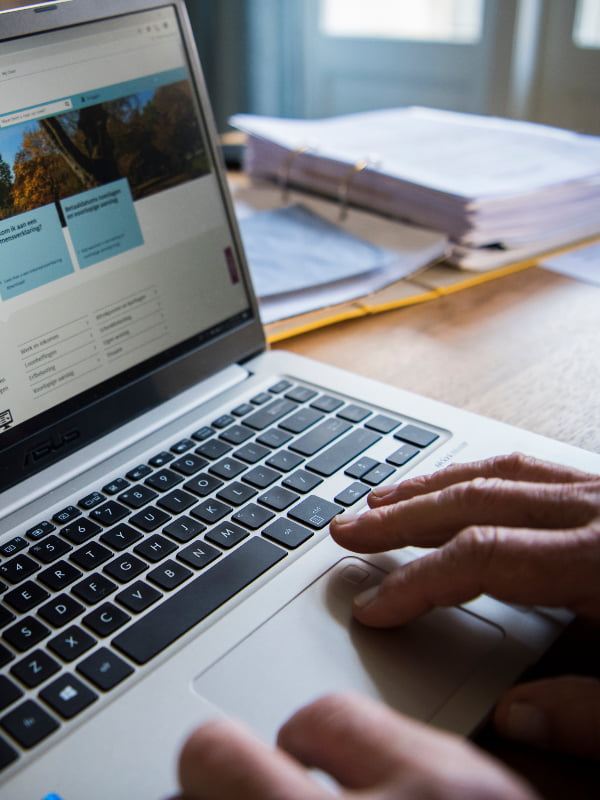Innovation Credit: Attachments to your application
Do you want to apply for an Innovation Credit? Then, look at the overview of the attachments you must submit with your application. Also, read carefully what these attachments must comply with. This will increase the chances of your application succeeding.
General
A subject specialist and a financial expert will assess your plans on their content. So, make sure your plans have sufficient depth. You must also substantiate claims and describe them in the plans as much as possible quantitatively rather than qualitatively.
1. Business plan (form-free)
In the business plan you clearly state the market size, competitive position, value for the customer and the revenue model. You need to substantiate your plan using figures.
- Describe the company. Provide answers to questions such as:
- what is the history?
- what is the company doing now?
- what does the organisational structure look like?
- what is the legal structure? Provide an organisational chart.
- who are the shareholders? Provide a summary of basic data on the company's shares (Cap Table); and
- how is decision-making organised?
- Supply enough information about the background of the management. Please also describe how you guarantee and/or attract/replace crucial FTEs and knowledge.
- The business case for your innovation should be clear. In doing so, highlight the following points:
- Who is the customer? What is the customer's problem, and how will the innovation solve this problem?
- What technical requirements must the final product meet to solve the customer's problem? How did these requirements come about?
- Put the end-user's economic benefit at the heart of your business plan. What financial benefit does your customer get that allows you to charge your selling price?
- Clearly state and substantiate the unique selling points of your innovation.
- Provide a well-substantiated competition analysis with an objective comparison.
- Include a cost-price structure. Clearly show how you can reduce your costs where necessary. The final cost price is important for ensuring a good margin.
- Make a conscience choice in the earning model and the marketing method. Both your commercial strategy and your marketing strategy must be clearly stated in the plan. Clearly substantiate why the strategy is suitable for the market, your product and the chain you work in.
- Provide a clear image of the market. Show the basis for your revenue forecasts.
- Clearly show the scope of the technical development risk and why a state instrument such as the Innovation Credit is necessary for its funding.
- Include clear descriptions of the various certification processes in your business plan.
- Give details about whether and how you operate in a socially responsible manner, taking into account humans, animals, the environment and society.
2. Project plan (form-free)
In the project plan you clearly state the status of the technology, technological feasibility and what makes your proposal unique. In this plan, based on a technical risk analysis, you will come up with a systematic project plan with clear and intermediately measurable milestones.
- Describe your proof of principle, in other words, the technical feasibility, of your project. How do the innovations compare to (existing) alternatives? Please also clearly show why the operating principle can lead to the intended practical application.
- Describe the quantifiable product requirements of the market or the customer.
- Clearly show which innovations you are developing and what the risks are.
- Carefully map the technical risks. Please carefully conduct research into the possibilities and limitations for your development. Rank these technical risks according to size, risk of failure and impact. A Failure Mode and Effects Analysis (FMEA) is a frequently used approach.
- Clearly state the possible solutions for the most important risks, with options for improvement and any alternatives and please explain these clearly. Please also describe what the effects are for the project planning and the costs if you need to switch to these alternatives.
- Supply a sufficiently detailed project plan with a systematic approach. It is important that the project has been divided into multiple logical project periods, where necessary with multiple work packages.
- Describe which deliverables you differentiate per project period. The period ends with achieving a clearly measurable and quantifiable (SMART) project milestone. These milestones are then linked to the financial reporting periods during the project.
- Describe the final specifications that the project must comply with upon completion of the project. In achieving these specifications, a market need must be met.
- Your intellectual property strategy is of great importance to your technological innovation’s earning model. Which choices do you make in this and why? And are you able to commercialise your development on the markets you have in mind?
3. Financing plan (form-free)
In the financing plan you give a clear overview of 1) your project budget, 2) your companys finances and 3) a cash flow overview from now until you complete your loan repayments. For the project budget, please use our format, which you can download below.
The following costs are considered development costs: personal wage costs, materials, depreciations, outsourcing costs, travel expenses and costs associated with patent applications.
- The Innovation Credit finances up to a maximum of 45% of the project if there is no collaboration. The rest of the project's financing, as well as the funding of non-eligible operating costs, must either come from your own resources or other investors/private investments. When you submit the application, it is important to have a clear financing plan already. For example: if the contracts with other investors have not yet been signed, signing these contracts will be included as a granting condition. Thus, the Innovation Credit will only be granted when the company's and project financing are complete for the entire project duration.
- If you want to use turnover from sales as funding, you need to demonstrate that those sales will occur. For example, you can provide signed sales contracts or use turnover figures from previous years to demonstrate the expected turnover during the project duration. Are specific customers crucial for the turnover? If so, we expect insight into the agreements with these customers. Suppose turnover is a significant contributor to the financing of the development project, and this turnover is also very uncertain. In that case, this can, for example, be met by a shareholder guarantee.
- Make the proposed funding as specific as possible by providing funding agreements, term sheets and/or declarations of intent. It could be useful to explain some of the expected financing of the project in a separate chapter.
- Include explanatory notes to important assumptions in the forecasts. In these types of projects it’s important to think in scenarios. Please take into account the usual setbacks in the area of uncertain cashflow, budgeted development costs and planned project duration.
- The funding has to provide enough scope in the event a project is delayed and/or continues on after the deadline.
- Describe the use of specialised suppliers. Is this use considerable? Then please also add quotes, supply contracts or cooperation agreements as appendices to your application.
- If possible, please make use of the financial or other support of Regional Development Agencies, Seed Capital funds, investment funds and informal investors. The last-named website is only available in Dutch.
4. Documentary evidence of other financing
Documentary evidence of other financing of the project and the company during the project period. Examples include signed term sheets, loan agreements, investment agreements and contract agreements.
5. Financial statement (or opening balance sheet)
The latest financial statements (or opening balance sheet) and financial report for the current fiscal year.
6. SME assessment
An SME assessment (in Dutch) to determine the size of your business. The assessment is in Dutch. The credit percentage you are eligible for is based on the SME assessment. A collaborative venture's maximum credit percentage may be raised to 50% or 40%.
7. Legal organisational structure
The legal organisational structure of the entire company.
8. Extract Chamber of Commerce
An extract from the Chamber of Commerce of both the entity applying for the Innovation Credit and the entities in the direct administrative line upwards.
9. Articles of Association
The Articles of Association of both the entity applying for the Innovation Credit and the entities in the direct administrative line upwards.
10. Identification document
A copy of the identification of both the director(s) and the contact person of your organisation.
Best of luck with your application and the implementation of your plans!
More information
- Read more about the application process.
- Have you applied already? Read more about the process after your application.
- Ministry of Economic Affairs



